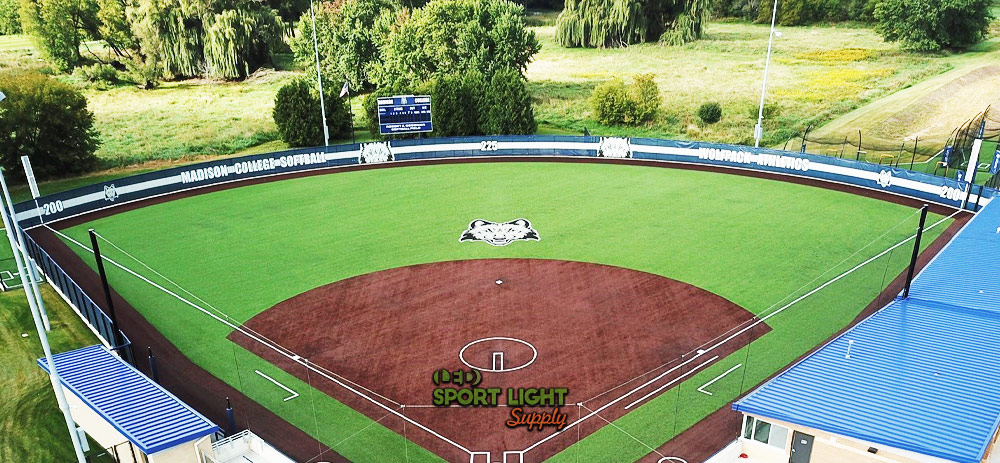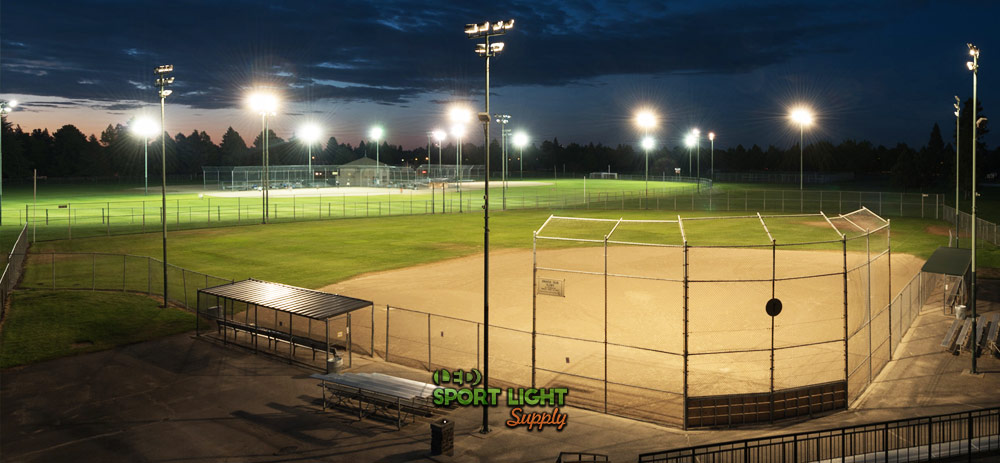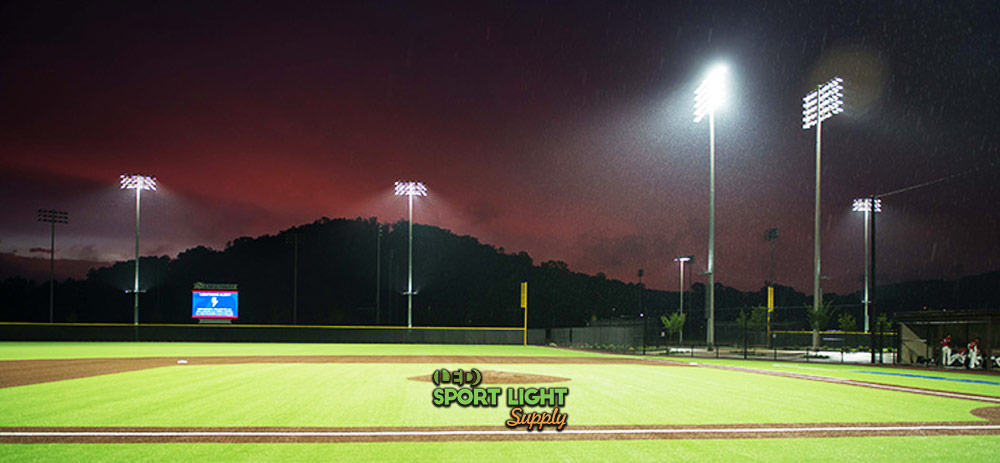Lighting enables games and practices to occur during the evening or nighttime hours. Adequate illumination is crucial not only for players to track the ball and navigate the field effectively but also for spectators to enjoy a clear and engaging view of the action. Proper lighting ensures that all participants can perform at their best, enhancing both the quality of play and the overall viewing experience.
Beyond its practical applications, effective lighting significantly contributes to the atmosphere and ambiance of a sporting event. Well-designed lighting can elevate the excitement and enjoyment of games by creating a vibrant and dynamic environment. It also improves safety by reducing shadows and ensuring all areas of the field are well-lit. For sports facilities aiming to host evening events or extend their usability, investing in high-quality lighting is essential. Careful consideration of lighting design is therefore critical when planning or updating a sports venue to ensure it meets both functional needs and enhances the overall spectator experience.
Table of Contents
ToggleFactors Affecting the Cost of Lighting a Softball Field
Size of the Field

The size of a softball field significantly influences the cost of its lighting. A larger field requires more lighting fixtures to ensure uniform illumination across the entire area. This increased number of fixtures not only raises the initial cost of installation but also affects ongoing expenses. Additionally, the larger the field, the more complex the placement and positioning of the lighting fixtures become. For instance, a bigger field may necessitate the use of taller poles or a more intricate arrangement of fixtures to achieve optimal coverage. These factors collectively contribute to the overall cost of the lighting project.
Type of Lighting Fixtures (LED vs. Traditional Bulbs)
Choosing between LED and traditional lighting fixtures plays a crucial role in determining the cost of lighting a softball field. LED fixtures, though more expensive upfront, offer significant advantages in terms of energy efficiency and longevity. They consume less power and have a longer lifespan compared to traditional bulbs, leading to substantial savings on energy bills and reduced maintenance costs over time. On the other hand, traditional bulbs are typically less expensive initially but may result in higher long-term costs due to their shorter lifespan and greater energy consumption. The decision between LED and traditional bulbs will depend on factors such as the project budget, desired lifespan, and energy efficiency goals.
Number of Fixtures Needed

The number of lighting fixtures required is directly related to the field’s size and the level of illumination desired. Smaller fields might only need a few fixtures to achieve adequate lighting, while larger fields will require more fixtures to ensure comprehensive coverage. The type of fixtures also affects this requirement; LED fixtures generally provide higher illumination with fewer units compared to traditional bulbs. Therefore, the total number of fixtures needed will vary based on the specific lighting technology used and the field’s dimensions.
Distance from Power Source
The distance between the power source and the softball field can impact installation costs. A greater distance necessitates additional wiring and electrical work, increasing both labor and material expenses. Conversely, if the power source is located nearby, the installation process is simpler and more cost-effective. Therefore, planning the location of the power source relative to the field is an important consideration in managing overall project costs.
Spill Light Control
Spill light refers to the unwanted illumination that extends beyond the intended area, potentially causing glare or light pollution. Effective control of spill light is crucial for maintaining visibility on the field and minimizing impact on the surrounding community. Techniques to manage spill light include using shielding on fixtures to direct light precisely, properly aiming fixtures to focus light on the field, and selecting fixtures with narrow beam angles. Evaluating these factors helps ensure that the lighting system meets the needs of players and spectators while mitigating negative environmental effects.
Labor Costs for Installation and Maintenance

Labor costs are a significant component of the total expense for lighting a softball field. Installation labor costs vary based on project complexity, fixture type, and the distance from the power source. Additional electrical work may further increase costs. Ongoing maintenance also affects the total cost; LED fixtures generally require less maintenance compared to traditional bulbs, leading to lower labor costs over time. Evaluating the long-term maintenance needs and installation requirements can help in budgeting for the complete lifecycle of the lighting system.
Estimates for the Cost of Lighting a Softball Field
Cost Estimates for Small, Medium, and Large Softball Fields Using LED Fixtures
The cost of lighting a softball field with LED fixtures varies depending on the size of the field. Here are some approximate estimates:
| Field Size | Approximate Dimensions | Cost Estimate | Assumptions |
|---|---|---|---|
| Small Softball Field | 200ft x 200ft | $20,000 to $30,000 | Field is near a power source, no significant additional electrical work, new fixtures, moderate lighting level. |
| Medium Softball Field | 300ft x 300ft | $30,000 to $50,000 | Field is near a power source, no major extra electrical work, installation of new fixtures. |
| Large Softball Field | 400ft x 400ft | $50,000 to $80,000 | Increased number of fixtures, more complex setup, adequate lighting for the larger area. |
These figures provide a general idea of the costs involved but may vary based on specific site requirements, such as additional electrical work or unique field conditions.
Comparison of Costs for LED vs. Traditional Fixtures
When evaluating the costs of LED fixtures compared to traditional lighting, it’s important to consider both upfront and long-term expenses.
| Cost Aspect | Details |
|---|---|
| Upfront Costs | LED fixtures typically have a higher initial purchase price compared to traditional lighting fixtures due to advanced technology and materials. |
| Long-Term Costs | Although LEDs require a higher upfront investment, they offer significant long-term benefits. They are more energy-efficient, leading to lower energy consumption and reduced electricity bills. Additionally, their longer lifespan reduces the need for frequent replacements, thereby lowering maintenance costs over time. |
In contrast, traditional fixtures, while less expensive initially, often incur higher ongoing costs due to their shorter lifespan and greater energy consumption. Consequently, the long-term savings associated with LED fixtures often outweigh the initial expense, making them a more cost-effective choice in the long run.
Other Considerations
Energy Efficiency and Long-Term Cost Savings of LED Lighting
LED lighting fixtures offer significant advantages in terms of energy efficiency compared to traditional lighting options. One of the primary benefits of LED lighting is its reduced energy consumption. LED fixtures require substantially less electricity to operate, which leads to lower energy bills over time. This energy efficiency translates into considerable long-term cost savings for sports facilities, where lighting is used extensively.
In addition to their lower energy use, LED fixtures also boast a longer lifespan. While traditional bulbs may need frequent replacements, LEDs can last up to 120,000 hours or more. This extended operational life further contributes to cost savings, as fewer replacements are needed and maintenance intervals are longer. Overall, the combination of lower energy consumption and reduced maintenance needs makes LED lighting a cost-effective choice for sports facilities aiming to maximize efficiency and minimize operational expenses.
Maintenance and Replacement Costs for Different Types of Fixtures
The maintenance and replacement costs associated with lighting fixtures can vary widely depending on the type of fixture used. LED lighting fixtures generally require less maintenance and have a significantly longer lifespan compared to traditional lighting options. LED fixtures are designed to last much longer—often up to 120,000 hours—compared to traditional bulbs, which typically last only a few thousand hours. This extended lifespan means that LED fixtures need to be replaced less frequently, resulting in lower maintenance and replacement costs over their operational life.
Despite their lower maintenance requirements, LED fixtures are not immune to failure or the need for occasional replacement. However, their reduced frequency of replacement and lower maintenance needs contribute to overall cost savings. In contrast, traditional lighting fixtures tend to have a shorter lifespan and require more frequent maintenance and replacement. This higher turnover can lead to increased labor and material costs, making traditional fixtures a more costly option in the long run. Thus, while the upfront cost of LED fixtures may be higher, their long-term benefits make them a more economical choice for facilities looking to manage both maintenance and operational expenses effectively.
Other Costs Associated with Lighting a Softball Field
In addition to the primary expenses for purchasing and installing lighting fixtures, several other costs may arise when lighting a softball field. These ancillary costs can significantly impact the overall budget of the project and should be carefully considered.
Poles
One notable expense is the cost of installing poles to support the lighting fixtures. The need for poles varies with the size of the field and the height required to achieve adequate illumination. Larger fields often necessitate taller poles, which can increase both material and installation costs. The complexity of the pole installation can further contribute to the overall expense, especially if specialized equipment or custom solutions are required.
Electrical Work
Electrical work is another critical factor in the overall cost of lighting a softball field. If the field is situated far from the existing power source, significant additional electrical work may be required to connect the lighting fixtures. This can include the installation of new wiring, transformers, and possibly even new power lines. The complexity and distance from the power source will directly influence the labor and material costs associated with these electrical upgrades.
Infrastructure
If the field does not have an existing lighting system, additional infrastructure may be necessary to support the new fixtures. This includes constructing concrete foundations for the poles, installing electrical panels, and laying out the necessary wiring. These infrastructure components are essential for ensuring that the lighting system is stable, functional, and compliant with safety regulations, adding to the total project cost.
Permits
Permits are another potential cost that can vary based on the location of the field. Many jurisdictions require permits for the installation of lighting systems, which can involve fees and approval processes. Securing the necessary permits ensures that the installation complies with local regulations and standards but can add additional expenses and time to the project.
Carefully evaluating these potential costs is crucial when budgeting for a softball field lighting project. By accounting for poles, electrical work, infrastructure, and permits, you can develop a comprehensive budget that covers all aspects of the project, ensuring a smooth and efficient installation process.
Conclusion
When evaluating the costs of lighting a softball field, it is essential to carefully assess both the potential expenses and the benefits of having a well-illuminated facility for evening games. A well-lit field not only allows for games and practices to occur after dark but also enhances visibility for players and spectators, creating a safer and more inviting environment. However, it’s important to consider the full scope of costs, including the initial investment in fixtures, installation, and ongoing maintenance and replacement expenses. To make an informed decision, consider the potential return on investment (ROI) of the lighting system. For instance, investing in LED fixtures, despite their higher upfront cost, can be advantageous if they offer significant long-term energy savings and durability. Conversely, if the lighting will be used for a shorter duration or energy savings are less critical, traditional fixtures may present a more economical choice. Balancing these factors will help determine whether the benefits justify the costs over time.
